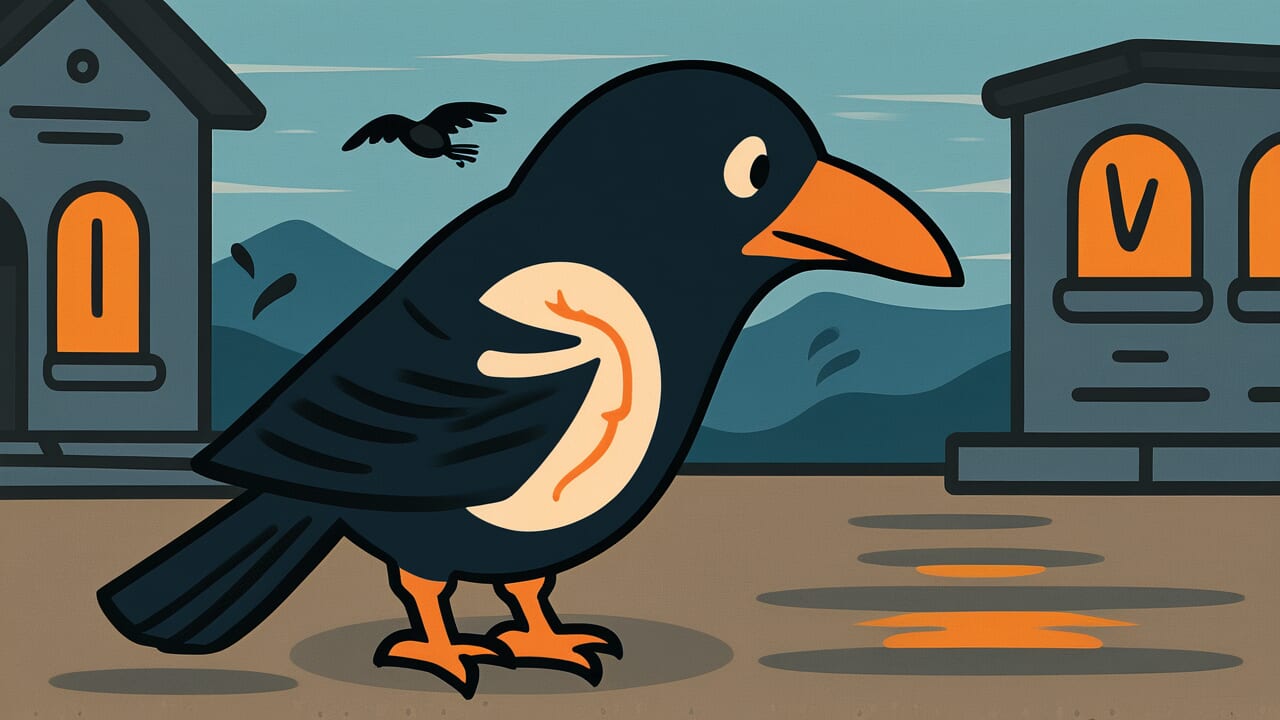How to Read “The crow that was crying is already laughing”
Ima naita karasu ga mō warau
Meaning of “The crow that was crying is already laughing”
This proverb describes how a child who was crying just moments ago suddenly breaks into a smile. It perfectly captures how quickly young children’s emotions change and how fast they can switch moods.
A child falls down and cries, but the moment they get a snack, they’re smiling. A toddler wails when someone takes their toy, but soon forgets about it when they find a new game to play.
These are the typical behavior patterns this proverb refers to.
People use this proverb to express the honesty and quick recovery of children’s emotions with affection and sometimes mild exasperation. From an adult’s perspective, children’s moods can be unpredictable and exhausting.
But the proverb carries a warm view that accepts this as part of childhood’s charm. Even today, parents and childcare workers use it to describe how quickly children’s moods can shift.
Origin and Etymology
No clear written records explain the origin of this proverb, but we can make interesting observations from how the words are structured.
The proverb uses the word “karasu” (crow), but it doesn’t actually refer to the bird. In Edo period wordplay and slang, “crow” was sometimes used as a code word for “child.”
Perhaps people saw similarities between crows and children. Both have dark black hair, make high-pitched sounds, and gather in noisy groups.
The contrast between “was crying” and “already laughing” is a traditional Japanese rhetorical technique that emphasizes how little time has passed. Combining “ima” (now) and “mō” (already) creates a vivid impression of change happening in just an instant.
This proverb likely emerged when extended families living together were common. People had many opportunities to observe children in daily life.
Anyone with childcare experience has seen a crying baby or toddler suddenly laughing just seconds later. This warm, down-to-earth proverb was born from such everyday observations.
Usage Examples
- He was crying so hard just now, but he’s already laughing. It’s exactly like “the crow that was crying is already laughing”
- “The crow that was crying is already laughing” really says it well—my grandchild switches moods incredibly fast
Universal Wisdom
This proverb has been passed down through generations because it captures a universal truth about the purity of children’s emotions. Young children express both sadness and joy with their whole being.
When they cry, they cry as if the world is ending. When they laugh, they laugh from the bottom of their hearts. There’s no calculation or pretense in it.
As we grow up, we learn to control our emotions. We smile even when we’re sad, suppress our anger, and express even our joy in moderation.
These are necessary skills for living in society, but we also lose something in the process.
The speed at which children switch emotions is actually a remarkable expression of life force. It’s the power to live in the present moment without being trapped by past sadness.
It’s the flexibility to move toward the next joy without dragging negative emotions along. This is the resilience humans naturally possess—the very power to live.
Our ancestors didn’t dismiss this trait in children as mere “fickleness.” Perhaps they saw in it the essential strength of human nature.
Sadness doesn’t last forever. No matter how painful something is, people can laugh again. This proverb carries that message of hope.
When AI Hears This
Thinking about human emotions through the physics concept of “phase transition” reveals interesting insights. Phase transition is the phenomenon where water becomes ice or steam.
The crying state can be thought of as emotional energy building up like water about to boil. At this point, the emotional system is unstable and holding massive amounts of energy.
The act of crying is a “phase transition” that releases this excess energy all at once. Energy flows out physically as tears, while neurotransmitters in the brain also change rapidly.
What’s fascinating is the physics law that systems always settle into low-energy states after releasing large amounts of energy. In other words, a child’s emotional system right after crying is stable with depleted energy.
In this state, just a small stimulus can easily shift them to another stable state—laughter. It’s like how boiling water that suddenly cools becomes easy to warm up again.
Adults struggle to switch emotions because they stop the energy release midway. When you hold back halfway, the system stays in an unstable intermediate state, making phase transition to the next state difficult.
Children cry with full force, completely resetting their energy. That’s why they can return to smiling so quickly.
Lessons for Today
This proverb teaches modern people how to have a healthy relationship with emotions. We often carry negative emotions far longer than necessary.
We dwell on failures for days, replay minor mistakes over and over, and stay trapped in past regrets.
But children teach us something important. Emotions are flowing things, not fixed states. Feeling sadness is natural, but we don’t need to be ruled by it forever.
In modern society, resilience has gained attention as an important skill. To maintain mental health in stressful environments, we need the emotional flexibility that children have.
This doesn’t mean adults should behave exactly like children. What matters is having the courage to move forward once you’ve fully felt an emotion.
If you’re going through something difficult right now, remember this proverb. Even if you’re crying today, the day when you’ll laugh again will surely come.
That’s the wonderful power humans possess.



Comments